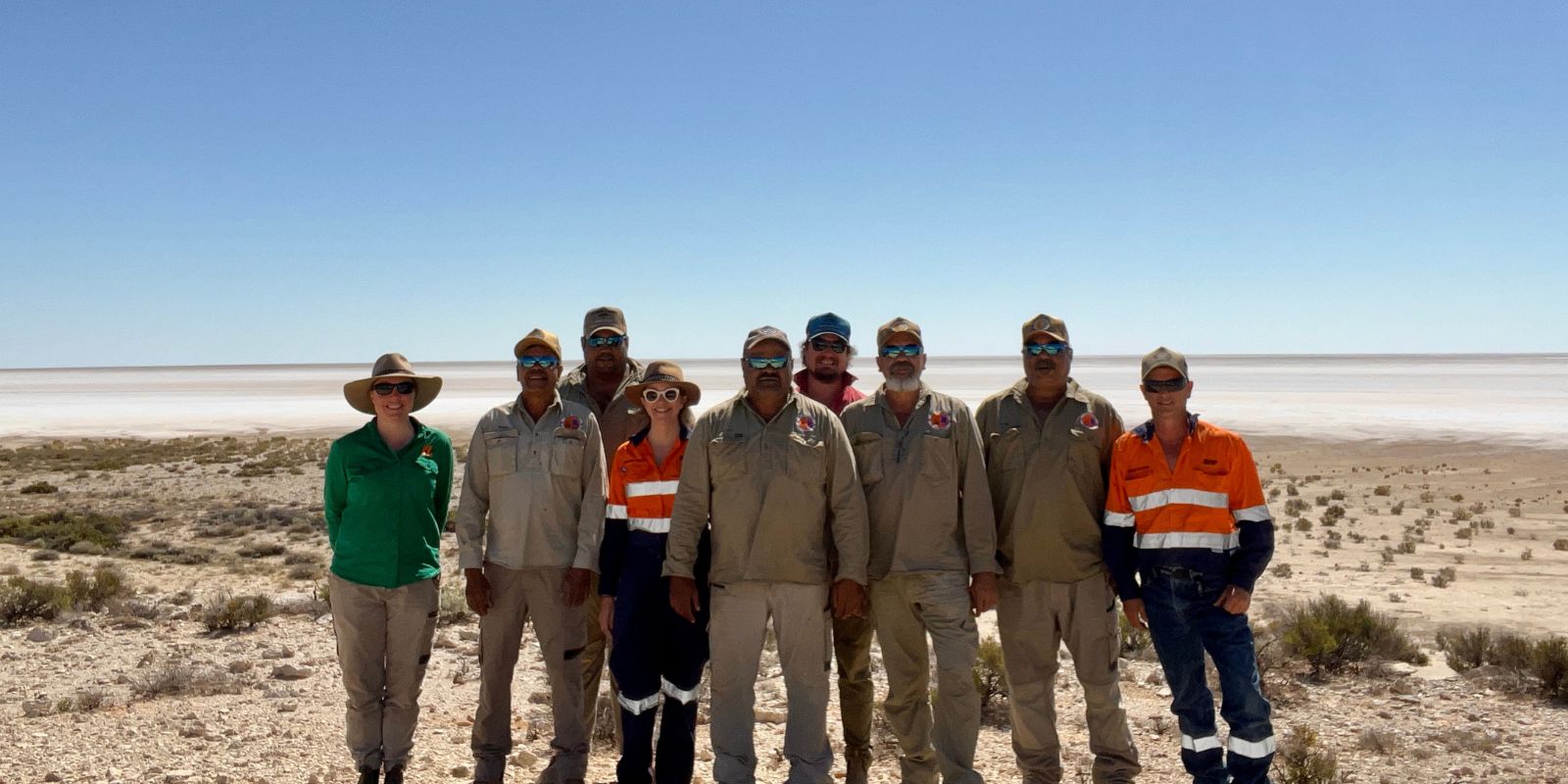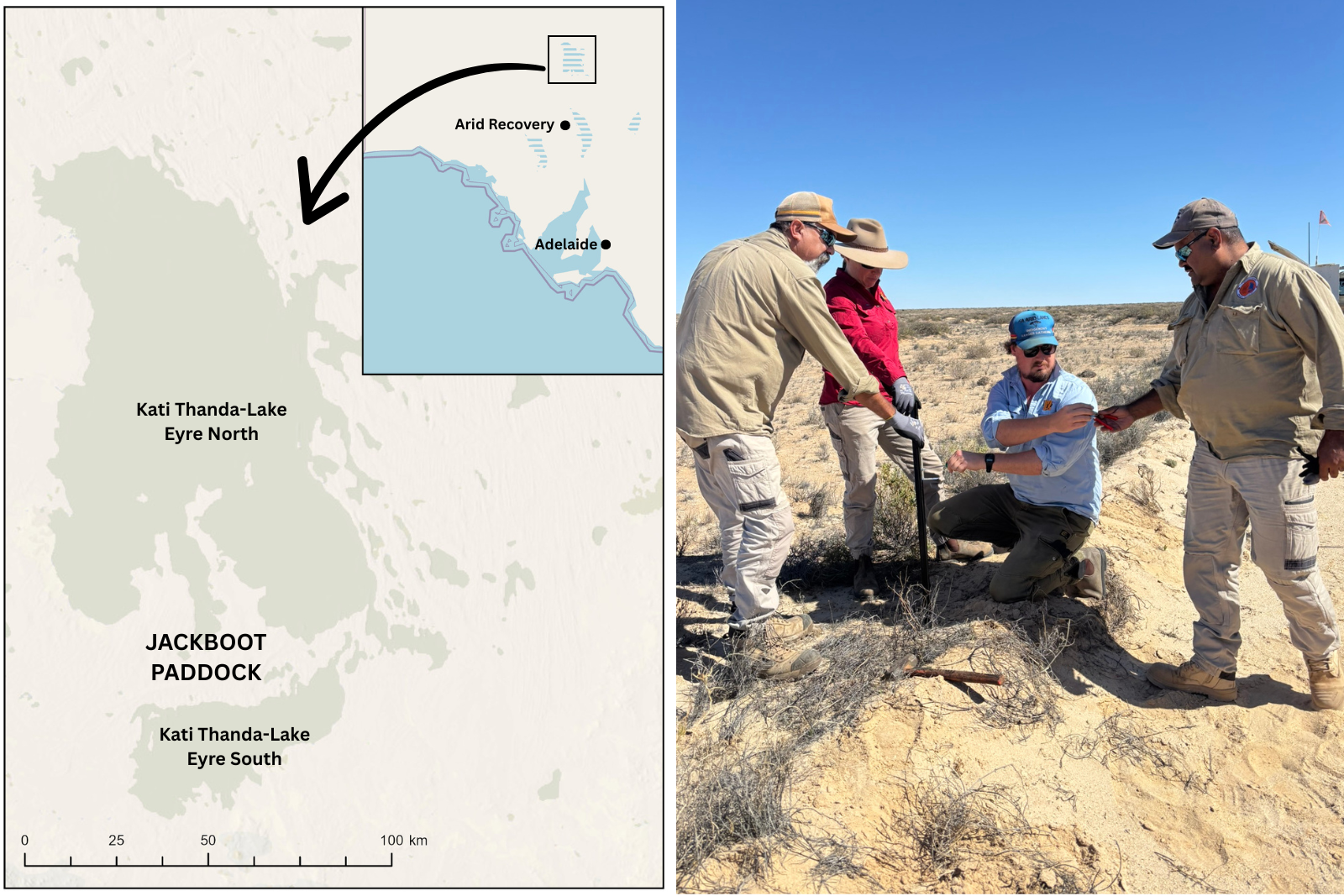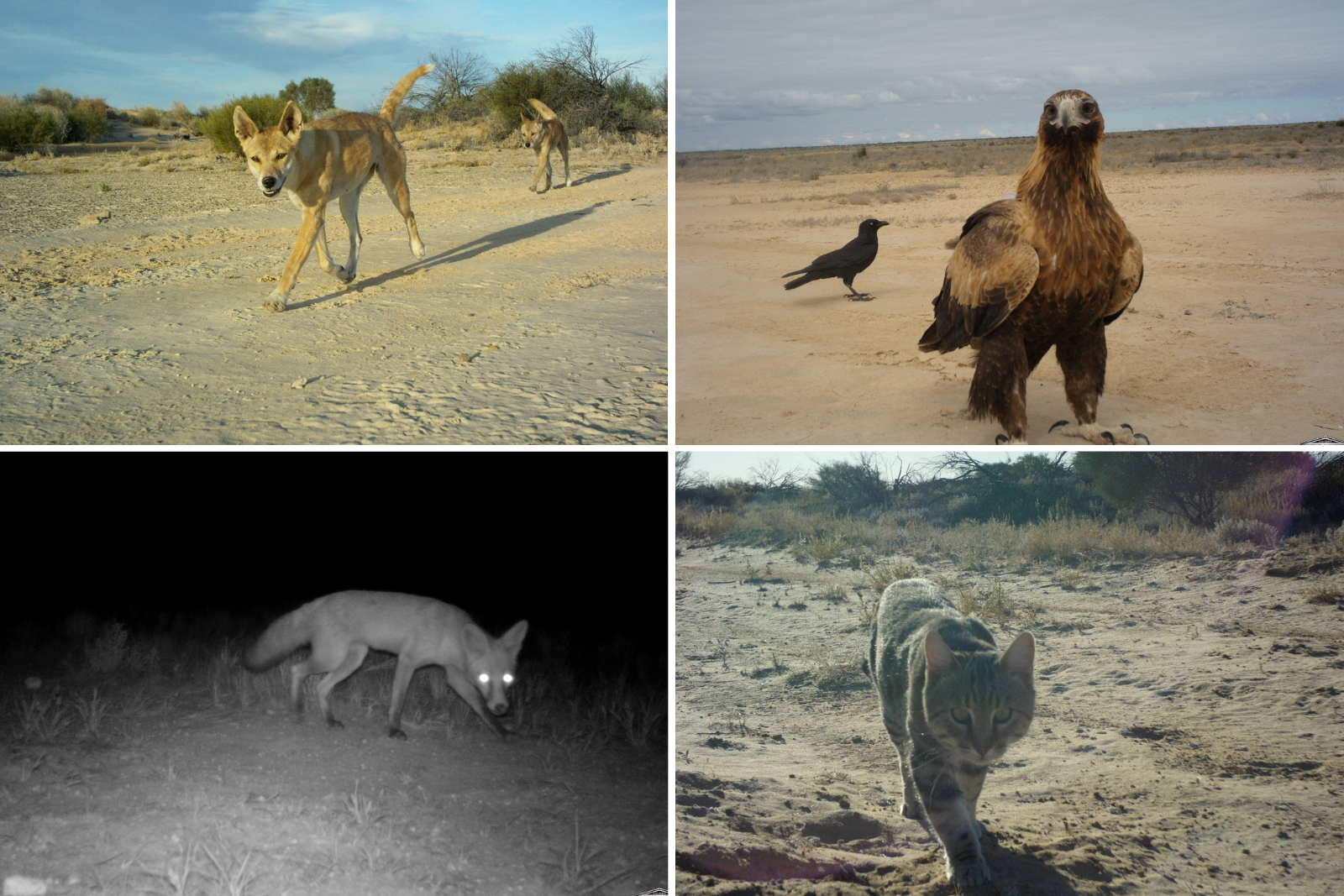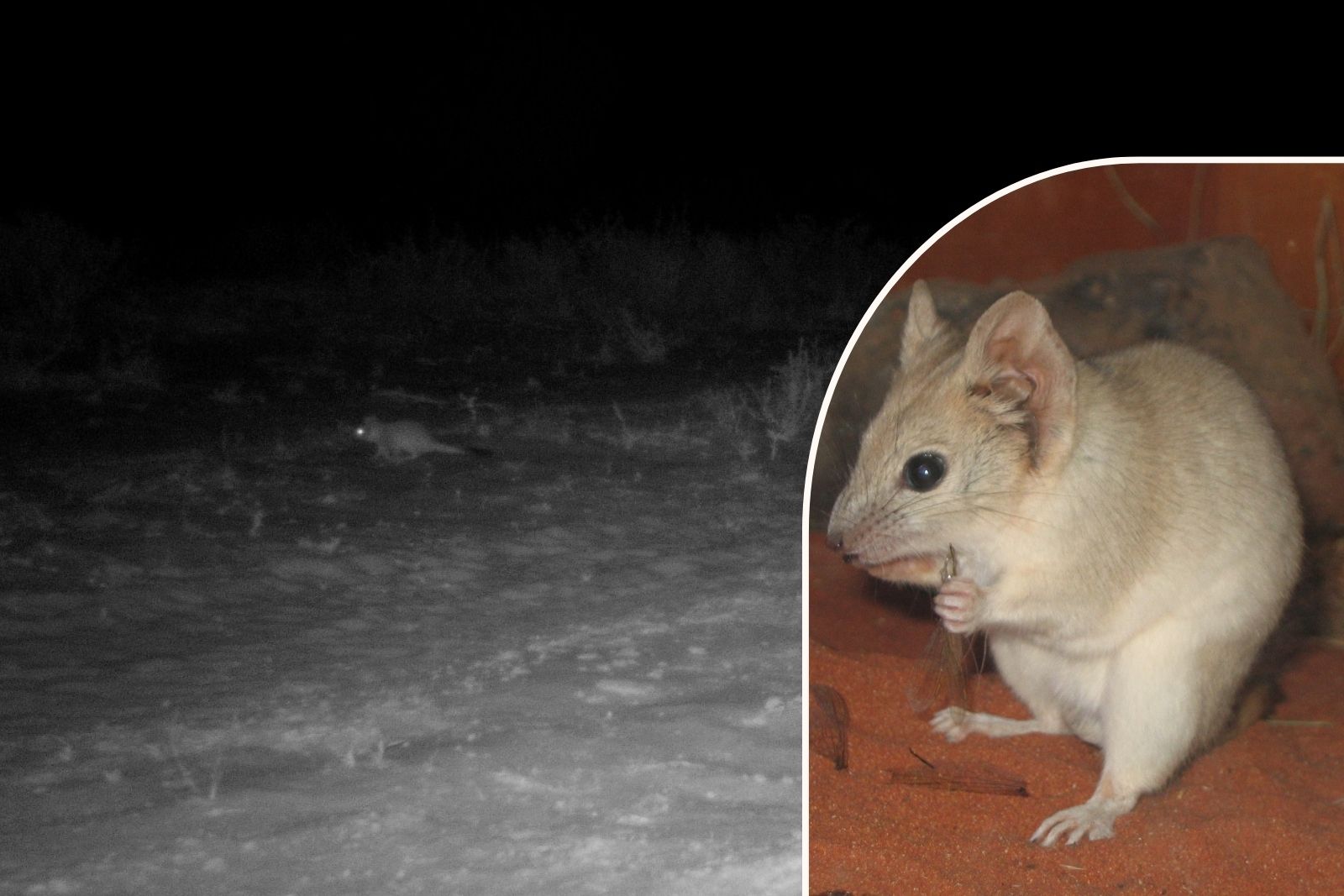Camera monitoring with Arabana Rangers
Arid Recovery
23 July 2025

What do 50 cameras in the desert reveal? Arid Recovery, BHP and the Arabana Rangers are working together on Country to monitor feral animals, protect native wildlife, and uncover signs of species hanging on in the outback
In April, Arid Recovery and the Arabana Rangers joined forces to establish a large-scale camera-trapping grid in the stock-free Jackboot Paddock, on Arabana Country near Kati Thanda-Lake Eyre. Supported by funding and staff from BHP, the project brings together Indigenous and ecological knowledge to better understand and inform the management of feral animals.
Feral species such as cats, foxes and rabbits are major drivers of the decline and extinction of native species across the Australian arid zone. Their impacts, predation and overgrazing, threaten both biodiversity and the ecological integrity of Country.

Jackboot Paddock is between Kati Thanda-Lake Eyre North and South (Map source: ESRI) (left), and Arid Recovery staff and Arabana Rangers setting up the first camera (right). To better understand these threats, the team deployed 50 motion-sensing camera-traps across Jackboot Paddock to monitor the activity and density of these invasive animals. These eyes on the landscape allow us to see what is happening when we are not there, gathering information on where and when feral animals are most active.
When we checked the cameras in June, we were met with some exciting results. Dingoes appeared regularly, as did foxes and rabbits. Feral camels and cats were seen less often, but were still present.

The results from the first camera traps are in: dingoes, wedge-tailed eagle and raven, fox, and feral cat.
A mulgara caught on camera. Squint and you'll miss it!The real highlight, however, was the detection of mulgaras at two sites! Mulgaras are stockier, slightly larger cousins of the kowari, another small carnivorous marsupial we talk about a lot at Arid Recovery. Like the kowari, they’re desert specialists and skilled hunters.
Head Arabana Ranger, Zaaheer McKenzie said, "the Arabana rangers were very excited to see the mulgara present in this area". The mulgara was also detected on Finniss Springs by rangers which shows that the little animal appears to be wide spread on Arabana country. The rangers are looking forward at continuing to work with Arid Recovery to gain further skills and knowledge in this type of work and what outcomes this project may produce for the protection and preservation of the jackboot paddock.
The project represents more than just monitoring. It’s an example for how science and Indigenous knowledge can come together to achieve stronger conservation outcomes. Chief Executive of Arid Recovery, Lauren Young helped set up the cameras, and said “collaborating with the Arabana Rangers is exciting, it enables meaningful knowledge-sharing that will only strengthen our joint efforts to protect this unique and important landscape”.
By working together, the Arabana Rangers and Arid Recovery are informing the conservation of native species, restore balance, and care for Country at the landscape scale. We’re eager to see what else appears when we check the cameras again in September, so stay tuned for more updates as we begin analysing the data and uncover new insights that will help shape the future of feral animal management on Arabana Country.